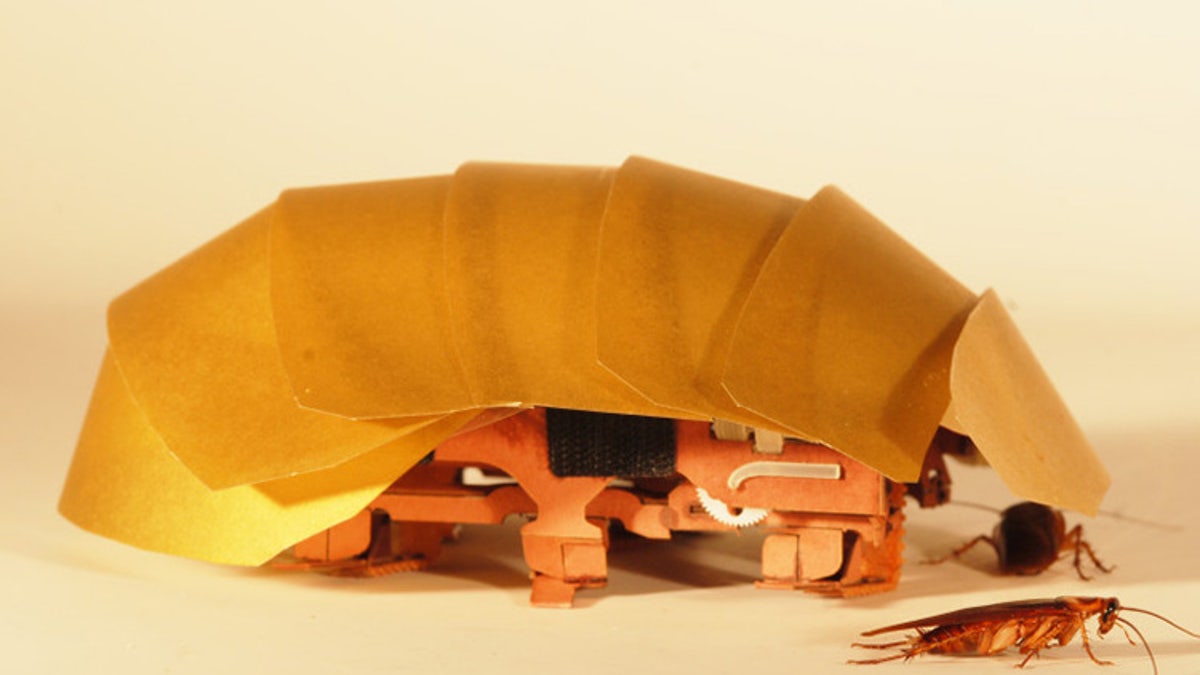
The CRAM robot was inspired by cockroaches and can crawl even when squashed to half its size. (Photo by Tom Libby, Kaushik Jayaram and Pauline Jennings. Courtesy of PolyPEDAL Lab, UC Berkeley)
A cockroach might be the key to a scientific breakthrough in robot technology.
Researchers at UC Berkeley developed a small-sized robot based on the unique movements and capabilities of the insect, specifically to better “understand how animals can rapidly transition from running on level ground to climbing up vertical walls," Kaushik Jayaram, a Harvard fellow and recent UC Berkeley PhD graduate who designed the robot, told The San Francisco Chronicle.
Cockroaches can travel more than 50 body lengths per second, which equates to roughly 200 miles-per-hour and have a special exoskeleton that allow the insect to quickly switch from a horizontal surface to a vertical one, the paper reported.
The ability to make the swift maneuver from horizontal to vertical at high speeds is something that robots today can’t even accomplish, Jayaram said.
The ultimate goal of the robot -- dubbed the Dynamic Autonomous Sprawled Hexapod (DASH) – is to pair the distinctive movement capabilities with different functions, such as climbing, tunneling and wedging, according to the paper.
"Integrating them will lead us towards producing highly functional robots, whose capabilities approach those of animals in real-world environments and have significant scientific, societal and economic impact in the near future," Jayaram said.
The team of researches detailed their project in a paper published Wednesday.
